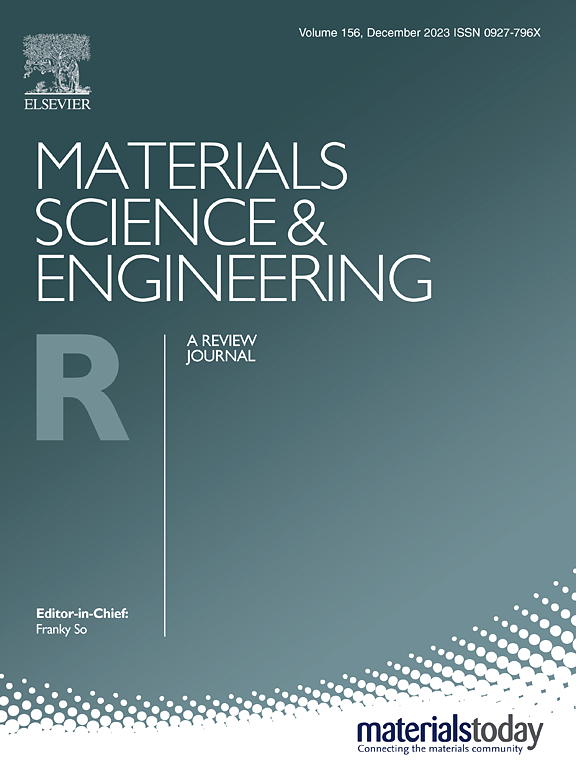Single-atom engineered sensors for volatile organic compounds
IF 31.6
1区 材料科学
Q1 MATERIALS SCIENCE, MULTIDISCIPLINARY
引用次数: 0
Abstract
The efficient and precise detection of trace-level volatile organic compounds (VOCs) is critically important for environmental monitoring, industrial safety, and public health. In this context, single-atom (SA) materials have emerged as a new frontier in sensor technology, offering unparalleled atom and energy efficiency, along with maximal exposure to active sites. Compared to conventional nanoparticle and bulk sensors, SA-based platforms exhibit superior sensitivity, selectivity, and tunability. This review presents a comprehensive overview of the advances in single-atom engineering (SAE) for VOC detection. We systematically discuss the design principles, fabrication methods, and sensing mechanisms of various SA-based sensors, including chemiresistive gas sensors (CGS), metal oxide semiconductors (MOS), microelectromechanical systems (MEMS), field effect transistors (FETs), and electrochemical sensors. Special attention is given to the roles of heteroatom doping, vacancy engineering, and support interactions in modulating the sensing performance. This review also highlights how advanced spectroscopic tools provide insight into SA-analyte interactions and how computational approaches, particularly density functional theory (DFT) and emerging machine learning (ML) techniques, aid in the rational design of next-generation sensors. Finally, we outline the current challenges and propose future research directions aimed at achieving scalable synthesis, long-term stability, and real-world deployment of SA-based VOC sensors. This review aims to guide future innovations in SA sensor technologies, setting the stage for transformative advances in VOC detection.
挥发性有机化合物的单原子工程传感器
痕量挥发性有机化合物(VOCs)的高效、精确检测对于环境监测、工业安全和公众健康至关重要。在这种情况下,单原子(SA)材料已经成为传感器技术的新前沿,提供无与伦比的原子和能源效率,以及最大限度地暴露于活性位点。与传统的纳米颗粒和体传感器相比,基于sa的平台具有优越的灵敏度、选择性和可调性。本文综述了单原子工程(SAE)在VOC检测方面的研究进展。我们系统地讨论了各种基于sa的传感器的设计原理,制造方法和传感机制,包括化学气体传感器(CGS),金属氧化物半导体(MOS),微机电系统(MEMS),场效应晶体管(fet)和电化学传感器。特别关注杂原子掺杂、空位工程和支持相互作用在调制传感性能中的作用。这篇综述还强调了先进的光谱工具如何深入了解sa -分析物的相互作用,以及计算方法,特别是密度泛函理论(DFT)和新兴的机器学习(ML)技术如何帮助合理设计下一代传感器。最后,我们概述了当前的挑战,并提出了未来的研究方向,旨在实现基于sa的VOC传感器的可扩展合成、长期稳定性和实际部署。本综述旨在指导SA传感器技术的未来创新,为VOC检测的变革性进步奠定基础。
本文章由计算机程序翻译,如有差异,请以英文原文为准。
求助全文
约1分钟内获得全文
求助全文
来源期刊

Materials Science and Engineering: R: Reports
工程技术-材料科学:综合
CiteScore
60.50
自引率
0.30%
发文量
19
审稿时长
34 days
期刊介绍:
Materials Science & Engineering R: Reports is a journal that covers a wide range of topics in the field of materials science and engineering. It publishes both experimental and theoretical research papers, providing background information and critical assessments on various topics. The journal aims to publish high-quality and novel research papers and reviews.
The subject areas covered by the journal include Materials Science (General), Electronic Materials, Optical Materials, and Magnetic Materials. In addition to regular issues, the journal also publishes special issues on key themes in the field of materials science, including Energy Materials, Materials for Health, Materials Discovery, Innovation for High Value Manufacturing, and Sustainable Materials development.
 求助内容:
求助内容: 应助结果提醒方式:
应助结果提醒方式:


